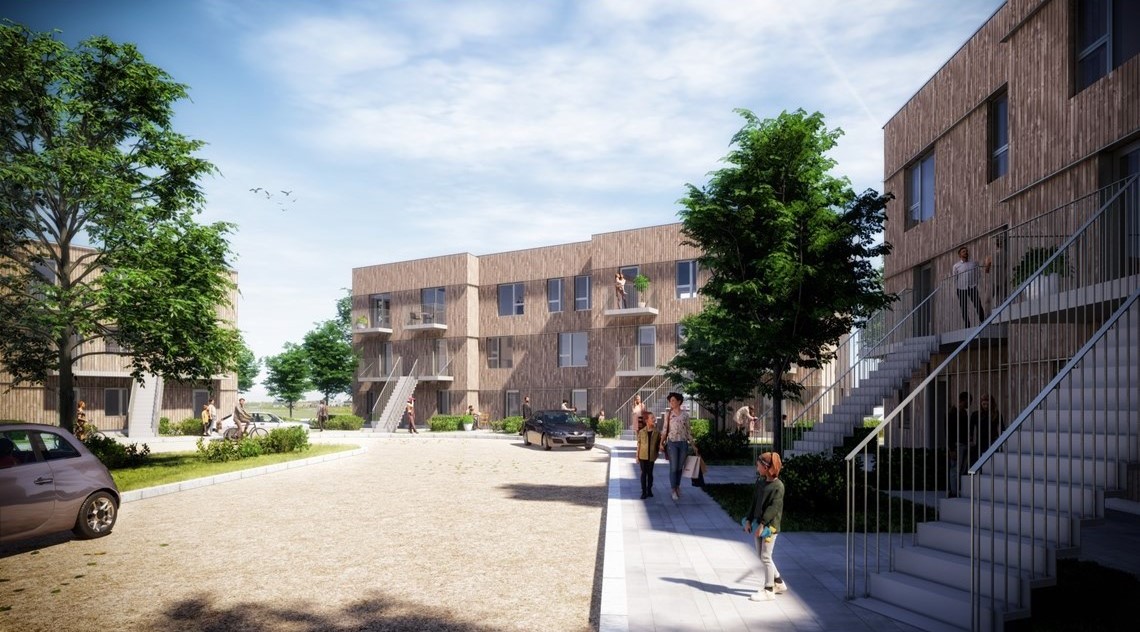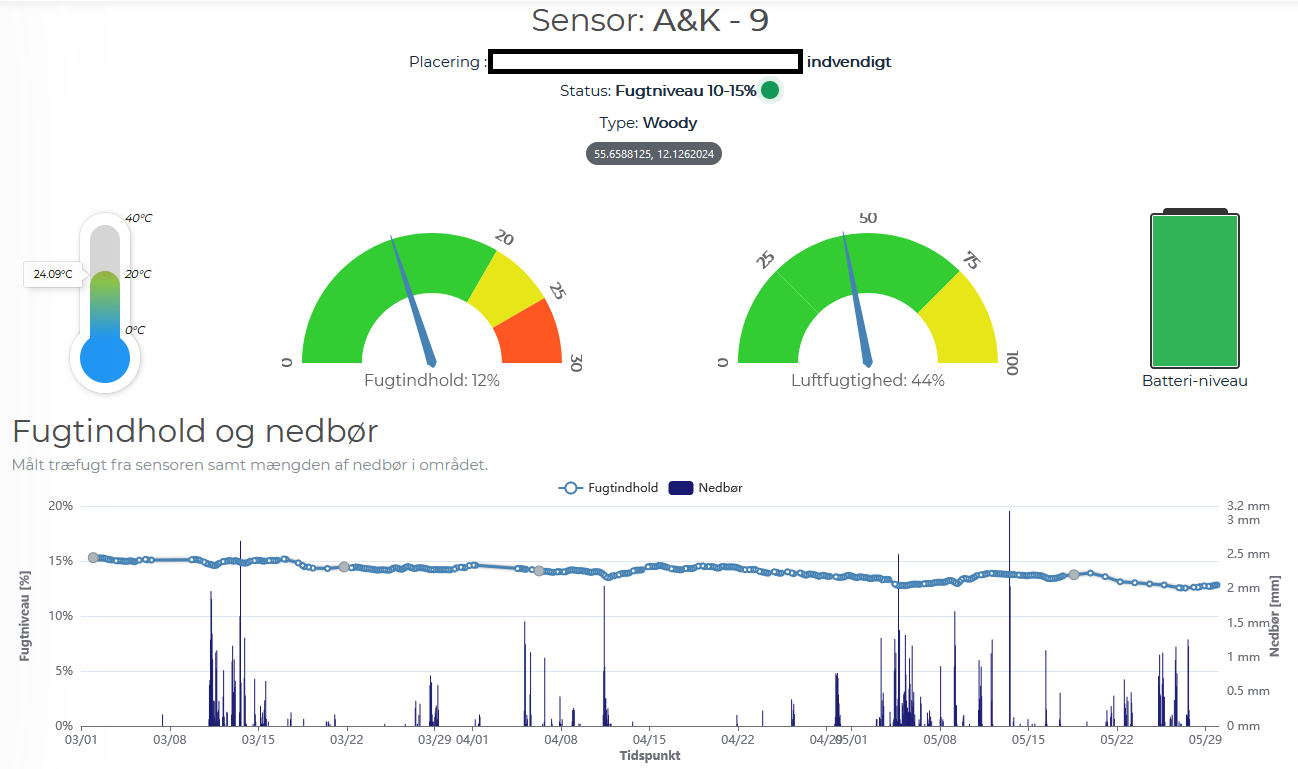
A previous construction project at Adserballe & Knudsen was highlighted by Byggeskadefonden as problematic due to cracks in CLT elements caused by poor moisture management.
To reduce future damage, Adserballe & Knudsen wanted an increased focus on their moisture strategy. The sensor solution from Woodsense was therefore tested in order to monitor risk areas and learn from the moisture development in the construction over time.
Construction firm: Adserballe & Knudsen
Developer: Boligselskabet Sjælland
Supplier: Unknown CLT supplier. Taasinge Elementer on e.g. roof cassettes. Södra.
Construction type: CLT-elements, concrete bath modules, roof cassettes and wood facades from Södra.
Location: Toppen, Trekroner.
Sensor placement: Behind facade, cavities between buildings, continuously during closing, separations, etc.
Overview: 5 apartment blocks to be executed in CLT elements with concrete foundations and concrete bath modules.

The placement of the moisture sensors was selected to detect potential crack formations and increase the safety in moisture management of the timber structures.
One of the focus areas was the bottom frame, specifically at the bituminous membrane, which is used to protect against moisture from the concrete deck, as well as by ventilation outlets, to ensure these were sealed correctly.
In addition, the buildings had no eaves, which is why the sensors were placed to monitor how the structure was affected by rain and snow.
Two tests were performed using the wireless moisture sensor:
An element did not behave as expected, which can be seen in sensor #9 in the figure below. This led to the location of a potential risk area that might otherwise have been discovered at a later time where the damage would have been significantly more expensive to repair. The element had to be opened and examined for damage.

The rest of the sensors could verify the hypothesis, and showed how the elements decreased to the required moisture level as seen in the figure below:

By using the Woodsense moisture sensors, Adserballe & Knudsen saved the project unnecessary wait time, as they could be sure that the sensors would detect moisture at any of the selected risk areas at the construction site. This helped ensure a timely delivery.
Woodsense sensors helped to make a construction firm’s moisture strategy safer and more thoroughly documented, which is an advantage in regards to both the documentation that must be handed over to the developer and also in the later maintenance of the building.
“The reports from Woodsense provide a good overview to show the developer, that the drying out takes place as planned and that we react to critical conditions to the elements.” - Niklas Overby Nielsen, Construction Manager at Adserballe & Knudsen.
Photo from Boligselskabet Sjælland (Photo: Jonas Whitehorn).